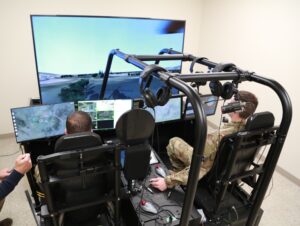BAE Systems is working to develop autonomy technologies for the Army’s Future Vertical Lift (FVL) program, the company said Tuesday.
The Army awarded BAE Systems $9 million in contracts to support the FVL Advanced Teaming Demonstration Program (A-Team), to include work “designed to advance manned and unmanned teaming (MUM-T) capabilities” for the future aircraft.

“In order to combat the increasingly complex, contested, and communication-denied battlespace presented by near-peer adversaries, the U.S. Army developed the A-Team program to create an automated system to offload the cognitive burden of pilots while enabling them to command swarms of unmanned aircraft,” the company wrote in a statement. “BAE Systems was selected to deliver a highly automated system to provide situational awareness, information processing, resource management, and decision making that is beyond human capabilities.”
BAE Systems said it will leverage autonomous developments out of its FAST Labs research arm and C4ISR Systems business for the work that covers three of the four FVL A-Team focus areas, to include human machine interface, platform resource capability management and situational awareness management.
“Our mature autonomy technology, which is the basis of our offering for the A-Team program, will greatly increase the warfighter’s ability to have a complete view of the battlespace and streamline decision making,” Chris Eisenbies, product line director for BAE Systems’ FAST Labs, said in a statement. “Future conflicts will include manned and unmanned teaming and increased automation in highly contested environments, helping to enable mission success.”
The program is expected to include testing BAE Systems’ autonomy tools in the Army’s Future Open Rotorcraft Cockpit Environment Lab.
The Army’s FVL program includes development of the Future Attack Reconnaissance Aircraft, Future Long Range Assault Aircraft (FLRAA) and the Future Tactical UAS, which all utilize the new Modular Open System Architecture (MOSA) “digital backbone.”
Bell [TXT] previously told reporters it conducted a successful autonomous test flight in December 2019 with its V-280 Valor tiltrotor aircraft, its offering for the FLRAA program (Defense Daily, Jan. 9).